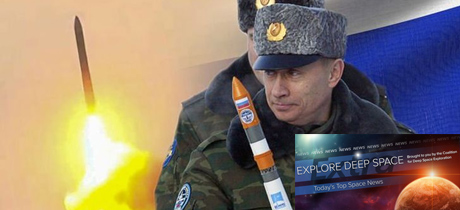In Today’s Deep Space Extra… Russian anti-satellite test created huge debris cloud endangering the International Space Station and the astronauts aboard. A look into the James Webb Space Telescope’s 6.5-meter-diameter mirror.
Human Space Exploration
Russian ASAT test creates thousands of pieces of space debris, imperils ISS
Spacepolicyonline.com (11/15): Russia conducted an unannounced anti-satellite test that generated an estimated 1,500 pieces of trackable debris and thousands more that are not trackable. Yesterday, State Department spokesperson Ned Price confirmed that Russia “recklessly conducted a destructive satellite test of a direct ascent antisatellite missile against one of its own satellites.” The first signs of concern that something was wrong came from reports that the ISS crew had to shelter in their Soyuz and Crew Dragon spacecraft yesterday and the ISS was on a path to reencounter the debris every 90 minutes. Asked if Russia had told the United States in advance about the test, Defense Department spokesperson John Kirby said they hadn’t.
NASA chief Bill Nelson condemns Russian anti-satellite test
Spaceflightnow.com (11/15): NASA Administrator Bill Nelson expressed outrage on Monday in response to a Russian anti-satellite test that prompted the agency to call on the astronauts aboard the International Space Station (ISS) to take shelter in the event the seven-person orbital science laboratory might be impacted from debris generated by the test. “I’m outraged by this irresponsible and destabilizing action. With its long and storied history in human spaceflight, it is unthinkable that Russia would endanger not only the American and international partner astronauts on the ISS, but also their own cosmonauts,” Nelson stated.
Roscosmos chief to meet with NASA representatives to discuss space junk situation
TASS of Russia (11/15): Robert Cabana, NASA’s associate administrator, and Joel Montalbano, NASA’s International Space Station (ISS) program manager, will meet in Moscow on Tuesday with Dmitry Rogozin, the director-general of Roscosmos. The meeting is set to include discussions about the debris threat created by a Russian anti-satellite test. The meeting had been planned earlier to discuss other issues, but due to Monday’s developments, the range of topics to be discussed will be extended. (Editor’s note: TASS is a Russian government-owned news source).
Space Science
The mirror of the James Webb Space Telescope: looking into the past
NASAspaceflight.com (11/13): When the joint NASA-ESA-CSA James Webb Space Telescope (JWST) launches this December, it will carry with it one of the largest telescopic mirrors ever developed. Considerably larger than the Hubble Space Telescope’s, the JWST 6.5m mirror is made up of 18 hexagonal, gold-plated beryllium mirror segments. Each individual mirror on the JWST features six-fold symmetry, or hexagonal shapes that can be rotated by either 60° or 120° without changing their appearance. To gain insight into the massive mirror and how it will function, NASAspaceflight.com interviewed NASA’s Lee Feinberg, James Webb’s Optical Telescope Element Manager.
Black holes may be growing as the universe expands
Space.com (11/15): Studies of the gravitational waves produced when two black holes merge suggest that as the universe expands in response to the big bang, black holes are becoming more massive. The new hypothesis called “cosmological coupling” suggests, however, that all objects with mass are growing as well but that black holes grow the most irrespective of merging. The study led by a University of Hawaii physicist was published in The Astrophysical Journal Letters.
Did a comet explode over South America 12,000 years ago?
Sky & Telescope (11/15): A study led by a Brown University scientist traces the potential source of chunks of dark green and black glass strewn across the Atacama Desert in northern Chile to an ancient comet or comet fragment.
Other News
Collision avoidance maneuver performed for Chandrayaan-2: ISRO
Hindustan Times of India (11/16): Last month, the India Space Research Organization (ISRO) maneuvered the Chandrayaan-2 lunar orbiter to avoid a collision with NASA’s Lunar Reconnaissance Orbiter (LRO) near the Moon’s north pole. The mutually-agreed maneuver was carried out on October 18 to avoid a close approach two days later.

